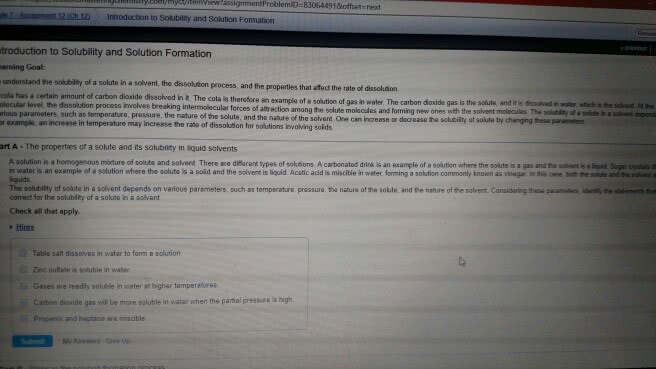CHEM101 Chapter Notes - Chapter 12: Chemical Polarity, Intermolecular Force, Miscibility

77
CHEM101 Full Course Notes
Verified Note
77 documents
Document Summary
Substances that are said to be miscible dissolve in each other, and so there is nothing like solute and solvent for them. The solubility of a solute is the maximum amount that dissolves in a fixed quantity of a given solvent at a given temperature. A rule of the thumb is that like dissolve like where in substances with similar types of intermolecular forces dissolve in each other. The intermolecular forces play a role in the solubility of substances. Hydrogen bonding is the principal force in solutions of polar o containing and n containing organic and biological compounds such as alcohols, amines, and amino acids. Dipole-dipole forces allow polar molecules such as propanol to dissolve in polar solvents. Ion-induced dipole forces rely on polarizability and arise when an ion s charge induces a nonpolar molecule to lead to dissolving. Dipole-induced dipole is also based on polarizability, and arises when a molecule induces a dipole from a nonpolar molecule.


